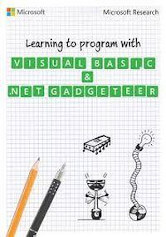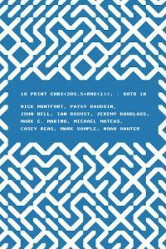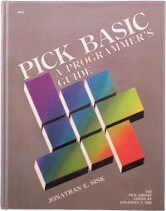Last Updated on December 19, 2024
4. Learning to Program with Visual Basic and .NET Gadgeteer by Ulf Nilsson and Jan Maluszynski
 This book is intended for school students and others learning to program in Visual Basic. It assumes no prior knowledge of programming, electronics, Visual Basic or the Visual Studio environment.
This book is intended for school students and others learning to program in Visual Basic. It assumes no prior knowledge of programming, electronics, Visual Basic or the Visual Studio environment.
Programming concepts are introduced and explained throughout the book. Each chapter is structured in a similar way: firstly a new concept to be learned is introduced, secondly there is a step-by-step tutorial on how to develop a simple example in Gadgeteer which uses that concept, and finally a set of exercises is given which enable the reader to practice the main points.
The book is licensed under the Creative Commons Attribution – ShareAlike 3.0 Unported License.
5. 10 PRINT CHR$(205.5+RND(1)); : GOTO 10 by Nick Montfort, Patsy Baudoin, John Bell, Ian Bogost, Jeremy Douglass, Mark C. Marino, Michael Mateas, Casey Reas, Mark Sample, and Noah Vawter
 This book takes a single line of code — the extremely concise BASIC program for the Commodore 64 inscribed in the title — and uses it as a lens through which to consider the phenomenon of creative computing and the way computer programs exist in culture. The authors of this collaboratively written book treat code not as merely functional but as a text — in the case of 10 PRINT, a text that appeared in many different printed sources — that yields a story about its making, its purpose, its assumptions, and more.
This book takes a single line of code — the extremely concise BASIC program for the Commodore 64 inscribed in the title — and uses it as a lens through which to consider the phenomenon of creative computing and the way computer programs exist in culture. The authors of this collaboratively written book treat code not as merely functional but as a text — in the case of 10 PRINT, a text that appeared in many different printed sources — that yields a story about its making, its purpose, its assumptions, and more.
They consider randomness and regularity in computing and art, the maze in culture, the popular BASIC programming language, and the highly influential Commodore 64 home computer.
This book is licensed under the Creative Commons Attribution-NonCommercial-ShareAlike license.
6. Pick/BASIC: A Programmer’s Guide by Jonathan E. Sisk
 Pick/BASIC: A Programmer’s Guide provides an overview of the PICK editor, explains commands used in the PICK/BASIC programming language, and includes useful sample programs.
Pick/BASIC: A Programmer’s Guide provides an overview of the PICK editor, explains commands used in the PICK/BASIC programming language, and includes useful sample programs.
This book was developed from the course materials for the author’s programming sessions in “The Pick System Educational Series.” Naturally, every little nuance about PICK/BASIC can’t be covered in one book, but this book is intended to provide a broad introductory overview about the powerful PICK/BASIC language.
Chapters cover:
- Pick Terminology and Concepts.
- The Related TCL Processes.
- Fundamental Pick/BASIC Statements and Functions.
- The Concept of Loops.
- Calculations and the Principle of Precedence.
- String-Handling Intrinsic Functions.
- Data Conversion and Print Masking.
- Numeric Data Conversion and Output Routing.
- The CASE Statement and Controlling Switches.
- Looping with the FOR-NEXT Statement.
- Extending the FOR-NEXT Construct.
- An Introduction to FILE I/O.
- Manipulating Dynamic Arrays.
- A Generalized Data Entry Program.
- Formatting Reports and Passing PROC Arguments.
- Using the EXECUTE Statement.
- External Subroutines.
- Additional PICK/BASIC Concepts.
This book is published under a Creative Commons Attribution 3.0 Unported License.
Pages in this article:
Page 1 – A Beginner’s Guide to GAMBAS and more books
Page 2 – Learning to Program with Visual Basic and .NET Gadgeteer and more books
All books in this series:
| Free Programming Books | |
|---|---|
| Ada | ALGOL-like programming language, extended from Pascal and other languages |
| Agda | Dependently typed functional language based on intuitionistic Type Theory |
| Arduino | Inexpensive, flexible, open source microcontroller platform |
| Assembly | As close to writing machine code without writing in pure hexadecimal |
| Awk | Versatile language designed for pattern scanning and processing language |
| Bash | Shell and command language; popular both as a shell and a scripting language |
| BASIC | Beginner’s All-purpose Symbolic Instruction Code |
| C | General-purpose, procedural, portable, high-level language |
| C++ | General-purpose, portable, free-form, multi-paradigm language |
| C# | Combines the power and flexibility of C++ with the simplicity of Visual Basic |
| Clojure | Dialect of the Lisp programming language |
| ClojureScript | Compiler for Clojure that targets JavaScript |
| COBOL | Common Business-Oriented Language |
| CoffeeScript | Transcompiles into JavaScript inspired by Ruby, Python and Haskell |
| Coq | Dependently typed language similar to Agda, Idris, F* and others |
| Crystal | General-purpose, concurrent, multi-paradigm, object-oriented language |
| CSS | CSS (Cascading Style Sheets) specifies a web page’s appearance |
| D | General-purpose systems programming language with a C-like syntax |
| Dart | Client-optimized language for fast apps on multiple platforms |
| Dylan | Multi-paradigm language supporting functional and object-oriented coding |
| ECMAScript | Best known as the language embedded in web browsers |
| Eiffel | Object-oriented language designed by Bertrand Meyer |
| Elixir | Relatively new functional language running on the Erlang virtual machine |
| Erlang | General-purpose, concurrent, declarative, functional language |
| F# | Uses functional, imperative, and object-oriented programming methods |
| Factor | Dynamic stack-based programming language |
| Forth | Imperative stack-based programming language |
| Fortran | The first high-level language, using the first compiler |
| Go | Compiled, statically typed programming language |
| Groovy | Powerful, optionally typed and dynamic language |
| Haskell | Standardized, general-purpose, polymorphically, statically typed language |
| HTML | HyperText Markup Language |
| Icon | Wide variety of features for processing and presenting symbolic data |
| J | Array programming language based primarily on APL |
| Java | General-purpose, concurrent, class-based, object-oriented, high-level language |
| JavaScript | Interpreted, prototype-based, scripting language |
| Julia | High-level, high-performance language for technical computing |
| Kotlin | More modern version of Java |
| LabVIEW | Designed to enable domain experts to build power systems quickly |
| LaTeX | Professional document preparation system and document markup language |
| Lisp | Unique features - excellent to study programming constructs |
| Logo | Dialect of Lisp that features interactivity, modularity, extensibility |
| Lua | Designed as an embeddable scripting language |
| Markdown | Plain text formatting syntax designed to be easy-to-read and easy-to-write |
| Objective-C | Object-oriented language that adds Smalltalk-style messaging to C |
| OCaml | The main implementation of the Caml language |
| Pascal | Imperative and procedural language designed in the late 1960s |
| Perl | High-level, general-purpose, interpreted, scripting, dynamic language |
| PHP | PHP has been at the helm of the web for many years |
| PostScript | Interpreted, stack-based and Turing complete language |
| Prolog | A general purpose, declarative, logic programming language |
| PureScript | Small strongly, statically typed language compiling to JavaScript |
| Python | General-purpose, structured, powerful language |
| QML | Hierarchical declarative language for user interface layout - JSON-like syntax |
| R | De facto standard among statisticians and data analysts |
| Racket | General-purpose, object-oriented, multi-paradigm, functional language |
| Raku | Member of the Perl family of programming languages |
| Ruby | General purpose, scripting, structured, flexible, fully object-oriented language |
| Rust | Ideal for systems, embedded, and other performance critical code |
| Scala | Modern, object-functional, multi-paradigm, Java-based language |
| Scheme | A general-purpose, functional language descended from Lisp and Algol |
| Scratch | Visual programming language designed for 8-16 year-old children |
| SQL | Access and manipulate data held in a relational database management system |
| Standard ML | General-purpose functional language characterized as "Lisp with types" |
| Swift | Powerful and intuitive general-purpose programming language |
| Tcl | Dynamic language based on concepts of Lisp, C, and Unix shells |
| TeX | Markup and programming language - create professional quality typeset text |
| TypeScript | Strict syntactical superset of JavaScript adding optional static typing |
| Vala | Object-oriented language, syntactically similar to C# |
| VHDL | Hardware description language used in electronic design automation |
| VimL | Powerful scripting language of the Vim editor |
| XML | Rules for defining semantic tags describing structure ad meaning |
